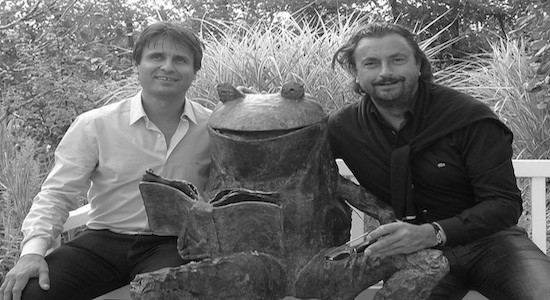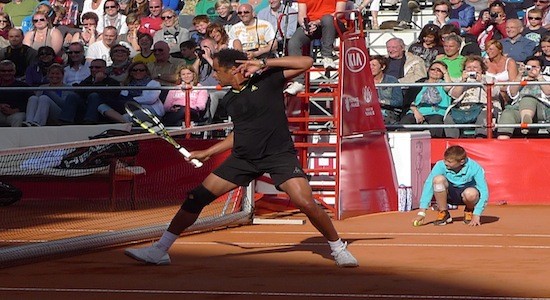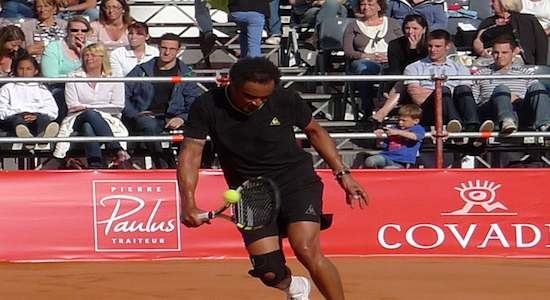

Lyon
Lyon is the third largest city in France and centre of the second largest metropolitan area in the country. It is the capital of the Rhone-Alpes region and Rhône département. It is known as a gastronomic and historical city with a vibrant cultural scene. It is also the birthplace of cinema.
Founded by the Romans, with many preserved historical areas, Lyon is the archetype of the heritage city, as recognised by UNESCO. Lyon is a vibrant metropolis which starts to make the most out of its unique architectural, cultural and gastronomic heritage, its dynamic demographics and economy and its strategic location between Northern and Southern Europe. It is more and more open to the world, with an increasing number of students and international events.
The city itself has about 480,000 inhabitants. However, the direct influence of the city extends well over its administrative borders. The figure which should be compared to the population of other major metropolises is the population of Greater Lyon (which includes 57 towns or communes): about 1,200,000. Lyon and its metropolitan area are rapidly growing and getting younger, because of their economic attractiveness.
Lyon is shaped by its two rivers, the Rhône (to the East) and the Saône (to the West), which both run North-South. Lyon may not have world-famous monuments such as the Eiffel tower or the Statue of Liberty, but it offers very diverse neighbourhoods which are interesting to walk around and hide architectural marvels. Highlights are: The view from Fourvière basilica, and the basilica itself; Streets and traboules in Vieux Lyon, St Jean cathedral; Traboules in Croix-Rousse; Musées Gadagne; Parc de la Tête d'Or; Musée urbain Tony Garnier and Etats-Unis neighbourhood; St Irénée church, Montée du Gourguillon, St Georges neighbourhood; A drink on Place Sathonay; St Bruno church; Parc de Gerland; Gratte-ciel neighbourhood in Villeurbanne.
The Festival of Lights (Fête des Lumières) is by far the most important event of the year. It lasts four days around the 8th of December. It was initially a traditional religious celebration: on December 8th, 1852, the people of Lyon spontaneously illuminated their windows with candles to celebrate the inauguration of the golden statue of the Virgin Mary (the Virgin had been the saint patron of Lyon since she allegedly saved the city from the plague in 1643). The same ritual was then repeated every year.
In the last decade or so, the celebration turned into an international event, with light shows by professional artists from all over the world. Those range from tiny installations in remote neighbourhoods to massive sound-and-light shows, the largest one traditionally taking place on Place des Terreaux. The traditional celebration lives on, though: during the weeks preceding December 8th, the traditional candles and glasses are sold by shops all over town.
The Nuits de Fourvière festival: From June to early August, the Roman theatres host various shows such as concerts (popular music, jazz, classical), dancing, theatre and cinema. International artists who usually fill up much larger venues are often seduced by the special atmosphere of the theatres.
Nuits sonores is an increasingly popular festival dedicated to electronic music, every year in May.
The Biennals: Lyon alternatively hosts a dancing (even years) and a contemporary art (odd years) biennals from September to December/January. The dancing biennal is traditionally opened by a street parade in which inhabitants of the Greater Lyon take part through neighbourhood associations. If you are in town at this moment, do not miss this colourful and funny event.
After Venice, the Old Lyon, a narrow strip along the right bank of the Saône, is the largest Renaissance area in Europe (well, it's actually far behind Venice). Its current organization, with narrow streets mainly parallel to the river, dates back to the Middle Ages. The buildings were erected between the 15th and the 17th centuries, notably by wealthy Italian, Flemish and German merchants who settled in Lyon where four fairs were held each year. At that time, the buildings of Lyon were said to be the highest in Europe. The area was entirely refurbished in the 1980s and 1990s. It now offers the visitor colorful, narrow cobblestone streets; there are some interesting craftmen's shops but also many tourist traps.
Shopping
The usual hours for downtown shopping are 10AM-7PM, Monday to Saturday. Some larger places close a bit later (7:30PM). Shops are closed on Sundays, except in December and in Vieux Lyon where Sunday is the busiest day of the week!
La Part-Dieu, Boulevard Vivier-Merle, 69003 Lyon, Mon-Sat 10AM-8PM. A huge shopping mall (the largest downtown mall in Europe) on four levels, with most major fashion brands. Avoid Saturday afternoons, the place is awfully crowded.
Rue de la République, 69002 Lyon. This pedestrian street is the main downtown shopping spot. Also check out Rue du Président Edouard Herriot (more expensive in general) and Rue de Brest; these three streets run parallel to each other along Presqu'île.
Rue du Président Edouard Herriot, rue Gasparin, rue Emile Zola, rue des Archers, 69002 Lyon. In the "golden square" between Place Bellecour and Place des Jacobins, you will find a number of famous luxury brands.
Rue Victor Hugo, 69002 Lyon. Brand names and tourist traps south of Bellecour.
Rue Auguste Comte, 69002 Lyon. Parallel to rue Victor Hugo, this is where you will find most antique shops in Lyon.
Carré de Soie, Avenue de Böhlen, 69120 Vaulx-en-Velin. Mon-Sat 10AM-7:30PM, some stores open Sun. New shopping mall (opened April 2009) with fashion stores, restaurants and a cinema multiplex, in a developing suburban area.
Food and Nightlife
The traditional restaurants in Lyon are called bouchons; the origin of the word is unclear (it literally means "cork"). They appeared at the end of the 19th century and flourished in the 1930s, when the economic crisis forced wealthy families to fire their cooks, who opened their own restaurants for a working-class clientele. These women are referred to as mères (mothers); the most famous of them, Eugénie Brazier, became one of the first chefs to be awarded three stars (the highest ranking) by the famous Michelin gastronomic guide. She also had a young apprentice called Paul Bocuse. Eating in a good bouchon is certainly a must-do. They serve the typical local dishes:
-salade lyonnaise (Lyon salad): green salad with bacon cubes, croutons and a poached egg;
-saucisson chaud: a hot, boiled sausage; can be cooked with red wine (saucisson beaujolais) or in a bun (saucisson brioché);
-quenelle de brochet: dumpling made of flour and egg with pike fish and a crayfish sauce (Nantua sauce);
-tablier de sapeur: marinated tripes coated with breadcrumbs then fried, even locals often hesitate before trying it;
-andouillette: sausage made with chopped tripes, usually served with a mustard sauce;
-gratin dauphinois: the traditional side dish, oven-cooked sliced potatoes with cream;
-cervelle de canut (cervelle' = ' brain): fresh cheese with garlic and herbs.
-rognons de veau à la moutarde: veal kidneys in a mustard sauce. Delicious and textural experience.
Lyon offers some nice nightlife. A good starting point is Place des Terreaux and then upwards towards the Croix Rousse. In the streets that climb the hill there are many nice places. Lyon is certainly a great starting point to explore the French vineyards: Beaujolais, Burgundy, Rhône Valley and the less known Jura, Savoie and Bugey are all within two hours drive. It is therefore unsurprising to see an increasing number of wine bars in Lyon.





Lyon est une commune située dans le sud-est de la France, au confluent du Rhône et de la Saône. C'est la commune où siège le conseil de la métropole de Lyon, le chef-lieu de l'arrondissement de Lyon, de la circonscription départementale du Rhône et de la région Rhône-Alpes, et le siège du département du Rhône. Ses habitants s'appellent les Lyonnais.
Lyon est en situation de carrefour géographique, au nord du couloir naturel de la vallée du Rhône (qui s'étend de Lyon à Marseille). Située entre le Massif central à l'ouest, et le massif alpin à l'est, la ville de Lyon occupe une position stratégique dans la circulation nord-sud en Europe. Ancienne capitale des Gaules au sein de l'Empire romain, Lyon est le siège d'un archevêché dont le titulaire porte le titre de primat des Gaules. Lyon devint une ville de foire à partir du Moyen Âge, puis une place financière de premier ordre de la Renaissance à la fin du xixe siècle. Sa prospérité économique a été portée successivement par le monopole de la soie, puis par l'apparition des industries notamment textiles, chimiques, et plus récemment, par l'industrie de l'image.
Lyon, historiquement ville industrielle, a accueilli de nombreuses industries pétrochimiques le long du Rhône, nommé le couloir de la chimie. Après le départ et la fermeture des industries textiles, Lyon s'est progressivement recentrée sur les secteurs d'activité de techniques de pointe, telles que la pharmacie et les biotechnologies. Lyon est également la deuxième ville étudiante de France, avec quatre universités et plusieurs grandes écoles. Enfin, la ville a conservé un patrimoine architectural important allant de l'époque romaine au xxe siècle en passant par la Renaissance et, à ce titre, les quartiers du Vieux Lyon, de la colline de Fourvière, de la Presqu'île et des pentes de la Croix-Rousse sont inscrits sur la liste du patrimoine mondial de l'UNESCO.
Par sa population, Lyon constitue la troisième commune de France, avec 496 343 habitants au dernier recensement de 2012. Lyon est ville-centre de la 2e unité urbaine de France, laquelle comptait 1 584 738 habitants en 20125 et de la 2e aire urbaine (2 214 068 habitants en 2012) de France. Elle est la préfecture de la région Rhône-Alpes et le siège de la métropole de Lyon, qui rassemble 59 communes et 1 324 637 habitants en 2012. Selon le critique littéraire d'entre-deux-guerres, Albert Thibaudet, « si Paris est la capitale de la France, Lyon est la capitale de la province ». La ville de Lyon exerce une attraction d'importance nationale et européenne, et bénéficie ces deux dernières décennies d'un afflux de population. Son importance dans les domaines bancaires, financiers, commerciaux, technologiques, ou encore les arts et les divertissements, font aujourd'hui de la ville de Lyon une ville mondiale (également d'après le GaWC, classement réalisé par le département de géographie de l'université de Loughborough). Lyon est également le siège d'Interpol depuis 1989.




